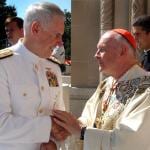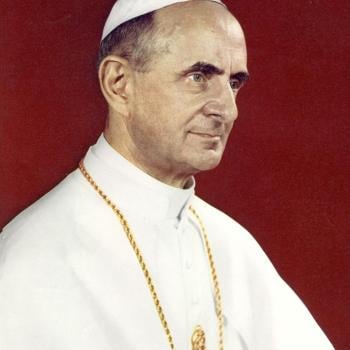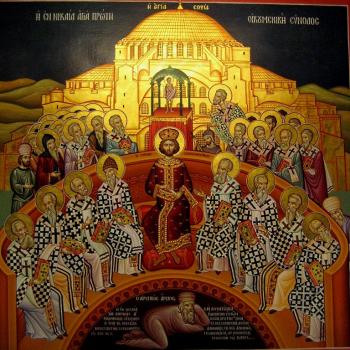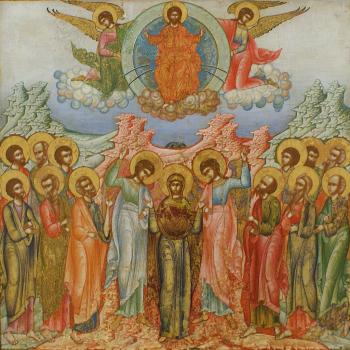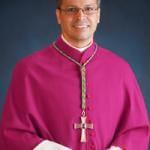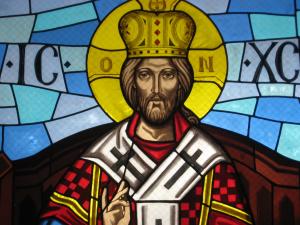
Jesus came to bring us peace, the peace which breaks down the barriers of sin. Sin fractures the common bonds of humanity, and so creates discord within humanity. We, humanity, indeed, all of creation is meant to be one even as God is one. We are called to love one another, so that through such love, the relative distinctions which exist between persons do not end up becoming the source of bitter hostility and strife. We are to love one another, rejoicing in one another, seeing the glory of God in each other. Through the way he overcomes sin and all its destructive qualities, Jesus truly is the prince of peace:
For he is our peace, who has made us both one, and has broken down the dividing wall of hostility, by abolishing in his flesh the law of commandments and ordinances, that he might create in himself one new man in place of the two, so making peace, and might reconcile us both to God in one body through the cross, thereby bringing the hostility to an end. And he came and preached peace to you who were far off and peace to those who were near; for through him we both have access in one Spirit to the Father (Eph. 2:14-18 RSV).
Though there is a great variety within humanity, a variety of peoples and cultures such as the distinction between Jew and Gentile, all such distinctions are relativized in Christ. They are not absolutes. When they are treated as such, the good established in such pluralism breaks down, so that humanity divides itself along the lines of such relative distinctions. It is sin which encourages us to use such distinction to destroy the unity which lies behind such distinctions. Sin defiles humanity, breaking it apart.
God has always been at work, trying to fix the harm done by sin. Various religious leaders were sent to establish laws which were to work like patch work, trying to hold humanity together. These laws did some good, but they could not fully heal what sin had destroyed. Only Christ could undo the decay of sin and restore the unity of humanity. In this way, that patchwork which came before him is no longer needed, for, in Christ, what sin has divided, is now reunited. Sin no longer has the final say. Jesus restores humanity in himself. Now through him, through the common humanity which we share with him thanks to the incarnation, we can be vivified by the Holy Spirit (the “Spirit of Christ”), and made adopted children of God.
Nonetheless, many ask, if Jesus is the prince of peace, if he restores what sin has destroyed so humanity can be brought together as one, why did he say he came not to bring peace, but a sword (cf. Matt. 10:34)?
Jesus fights against sin, and the divisions created by sin. To do so, he must expose the problem of sin; those who are attached to sin need to see the reality of sin. As the great physician, he has to give a diagnosis. Once the diagnosis is presented, can we accept it and take from him the cure which he offers. As the great physician, he will cut away sin, dividing it from humanity. Those who remain attached to such sin will find themselves cut off from what he has restored; divided, as they are, from the new, restored humanity, they will find themselves one with the exposed sin. At that time, they are not lost. They will see what sin has made of them and they will be free to choose to follow after Christ, to detach themselves from sin and so be healed.
Jesus, therefore, has a process by which he builds peace. He does not seek to establish a common link between sin and righteousness, to create a false peace between the two, for that would allow sin to continue to corrupt and destroy what Christ lifts up and repairs. Instead, he seeks to overcome sin, and in doing so, create true peace, one which will not know the pain and sorrow of sin.
Christ calls us all to become a part of and share in the body of restored humanity, the church; he wants to work in and through us to liberate the oppressed, heal the sick, help the poor, indeed, overturn all the harm which sin has done to the world. Once we are united with Christ, we are not strangers to the saints, nor to God. Rather, we become fellow-workers with them, hoping to be saints ourselves. We are meant to continue what Jesus began, bringing peace to the world by tearing down the structures of sin:
So then you are no longer strangers and sojourners, but you are fellow citizens with the saints and members of the household of God, built upon the foundation of the apostles and prophets, Christ Jesus himself being the cornerstone, in whom the whole structure is joined together and grows into a holy temple in the Lord; in whom you also are built into it for a dwelling place of God in the Spirit (Eph. 2:19-22 RSV).
Being established as a “temple” for the Lord is to become a christ in Christ, that is, to unite ourselves with Christ. Insofar as we fight against the structures of sin, we will not bring peace to the world, but the sword of truth which will deconstruct the foundations of sin; but insofar as we tear down those structures, we will likewise bring peace, showing the world the peace of the kingdom of God, the kingdom in which Christ reigns as the prince of peace. We will act as Christ, showing our love for humanity, knowing that by doing so, we love God, as St. Photius preached:
It is impossible to be man-hating and not be God-hating, as it is impossible to be man-loving without being God-loving. Wherefore, let us love one another, beloved ones, using again the Divine as a good counsellor and exhorter, who crieth out in a loud voice: “Love is from God; and he that loveth is born of God, and knoweth God; for God is love,” and “if a man saith he is in the light, and hateth his brother, he is in darkness, and he that loveth his brother abideth in the light, and there is none occasion of stumbling for him; he that hatheth his brother is in darkness, and goeth in darkness, and knoweth not whither he goeth, because darkness hath blinded his eye.”[1]
If we truly love Christ, we will seek to restore what sin has destroyed. We cannot do so without rooting out sin wherever it is found. The structures of sin divide us, making us hate one another. Racism, like sexism, come out as a result of sin, and so must be rejected in order to show the world the peace of the kingdom of God. We must take seriously the structures of sin and fight against them, knowing that when we do so, we might not make initial peace with those who are attached to them, but once the structures are overcome, once the cancer of sin is cast out of society, we can begin the process of healing, and establish true peace. So long as the demonic presence of sin continues to spread its cancer, so long as we find those who tell us the fight against racism is itself the problem, we must respond, taking power away from those who would further promote the structures of sin; we must seek peace, indeed, desire peace, but the peace must be true. There can be no false peace, no false unity, with those who would reinforce and further establish the structures of sin in society. We are to love those held in bondage by such ideology, for we are to love our enemies, but such love does not love them for what they do and the harm they cause others, but because of the common humanity they have with us and the good which can be revealed in them once they have broken free from their sin. For once sin and all its structures have been demolished, once they have been exorcised from society, those bound by it can find their true place in humanity and establish true peace with us, revealing once and for all the peace which Jesus brings.
[1] St. Photius, The Homilies of Photius, Patriarch of Constantinople. Trans. Cyril Mango (Harvard: Harvard University Press, 1958; repr. Eugene, OR: Wipf & Stock, 2017), 132 [Homily VI].
Stay in touch! Like A Little Bit of Nothing on Facebook.
If you liked what you read, please consider sharing it with your friends and family!


